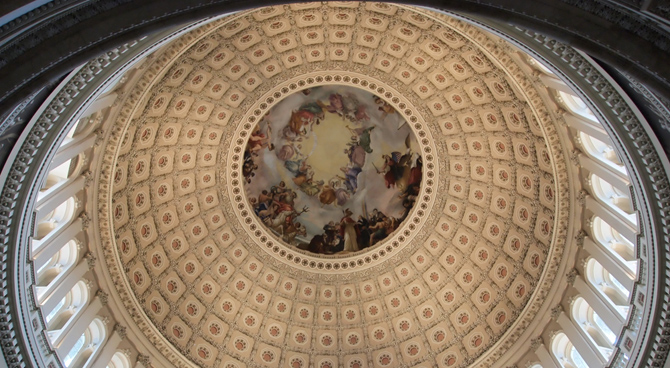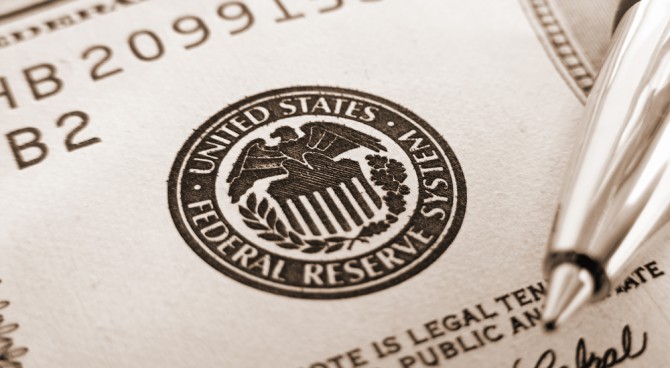By Phil Gramm and John Taylor as appeared in Wall Street Journal on September 12, 2012
Since mid-September of 2008, the Federal Reserve balance sheet has grown to $2,814 billion from $924 billion as it purchased massive amounts of U.S. Treasurys and mortgage backed securities. To finance those purchases the Fed increased currency and bank reserves (base money).
That kind of monetary expansion would normally be a harbinger of inflation. However, with banks holding excess reserves rather than lending them out—and with velocity (the rate at which money turns over generating national income) at a 50-year low and falling—the inflation rate has stayed close to the Fed’s 2% target.
While the Fed considered its previous rounds of easing—QE1, QE2 and Operation Twist—the argument was consistently made that the cost of such actions was low because inflation was nowhere on the horizon. The same argument is now being made as the central bank contemplates QE3 during the Federal Open Market Committee meetings on Wednesday and Thursday.
Inflation is not, however, the only cost of these unconventional monetary interventions. As investors try to predict the timing and effect of Fed policy on financial markets and the economy, monetary policy adds to the climate of economic uncertainty and stasis already caused by current fiscal policy. There will be even greater costs when the economy begins to grow and the Fed, to prevent inflation, has to reverse course and sell bonds and securities to the public.
Since September 2008, the Fed has acquired $1.16 trillion of government securities—in fiscal year 2011 (Oct. 1, 2010-Sept. 30, 2011), the central bank bought 77% of all the additional debt issued by the Treasury. Aside from the monetary impact of these debt purchases, the Fed allowed the federal government to borrow a trillion dollars without raising the external debt of the Treasury and without having to pay net interest on that portion of the debt, since the central bank rebated the interest payments to the Treasury.
When the Fed must, in Chairman Ben Bernanke’s words, begin “removing liquidity,” by selling bonds, the external debt of the federal government will rise and the Treasury will then have to pay interest on that debt to the public. Selling a trillion dollars of Treasury bonds on the market—at the same time the government is running trillion-dollar annual deficits—will drive up interest rates, crowd out private-sector borrowers and impede the recovery. Debt-service costs to the Treasury will spiral as every 1% increase in federal borrowing costs add $100 billion to the annual budget deficit.
In addition, Operation Twist, by shortening the average maturity date of externally held debt, will require the Treasury to borrow more money sooner when the economy recovers and interest rates start to rise. This too will drive up interest costs and the deficit.
The same problems will occur as the Fed begins to sell its holdings of mortgage-backed securities to reduce the monetary base. When the Fed bought these securities, it may have marginally reduced mortgage interest rates. Selling them during a real recovery will likely cause mortgage rates to rise.
Proponents of QE3 argue that while the Fed’s balance sheet must be reduced at some future time, it has the tools to minimize the impact on interest rates by slowing down the pace of the sales. But the Fed’s ability to act has already been compromised by its pledge to maintain low interest rates through 2014. Having to time open-market sales to minimize interest-rate increases will further limit the Fed’s ability to preserve price stability. In short, the Federal Reserve in future years will face significant constraints that are being forged now.
The Fed could raise the interest rate that it pays banks on reserves they hold in lieu of reducing its balance sheet. Where would the money come from? It has to come out of the money the Fed is currently paying the Treasury, driving up the federal budget deficit. How will taxpayers feel about subsidizing banks not to lend them money?
Rational decision making comes down to a comprehensive measure of cost and benefits. The Fed’s effort to use monetary policy to overcome bad fiscal and regulatory policy long ago reached the point of diminishing returns. The benefits of a third round of quantitative easing will almost certainly be de minimis. But when economic growth does return, Fed actions will have to be reversed in an era of rising interest rates, and the marginal cost of a QE3 tomorrow will almost certainly be far greater than the marginal benefit today.
Someday, hopefully next year, the American economy will come back to life. Banks will begin to lend, the money supply will expand, and the velocity of money will rise. Unless the Fed responds by reducing its balance sheet, inflationary pressures will build rapidly.
At that point the cost of our current monetary policy will be all too clear. Like Mr. Obama’s stimulus policy, Mr. Bernanke’s monetary expansion will ultimately have to be paid for.
The Fed softened the recession by its decisive actions during the panic of 2008, but the marginal benefits of its subsequent policy have almost certainly been small. We may find the policies that had little positive impact on the recovery will have high costs indeed when they must be reversed in a full blown expansion.
Mr. Gramm was chairman of the Senate Banking Committee and is senior partner of US Policy Metrics. Mr. Taylor is a professor of economics at Stanford University and a senior fellow at the Hoover Institution. He was undersecretary of the Treasury for international affairs in the first George W. Bush administration.




